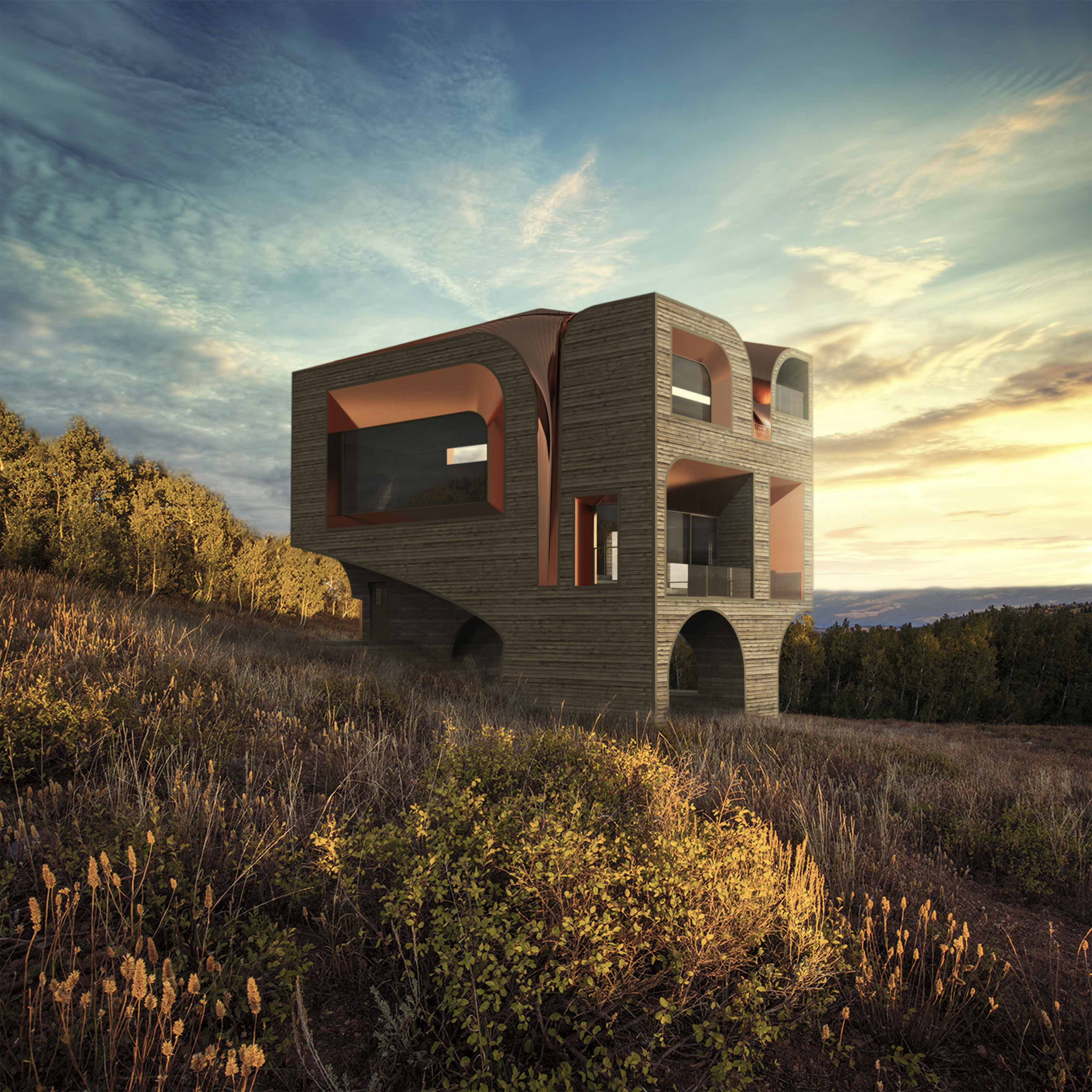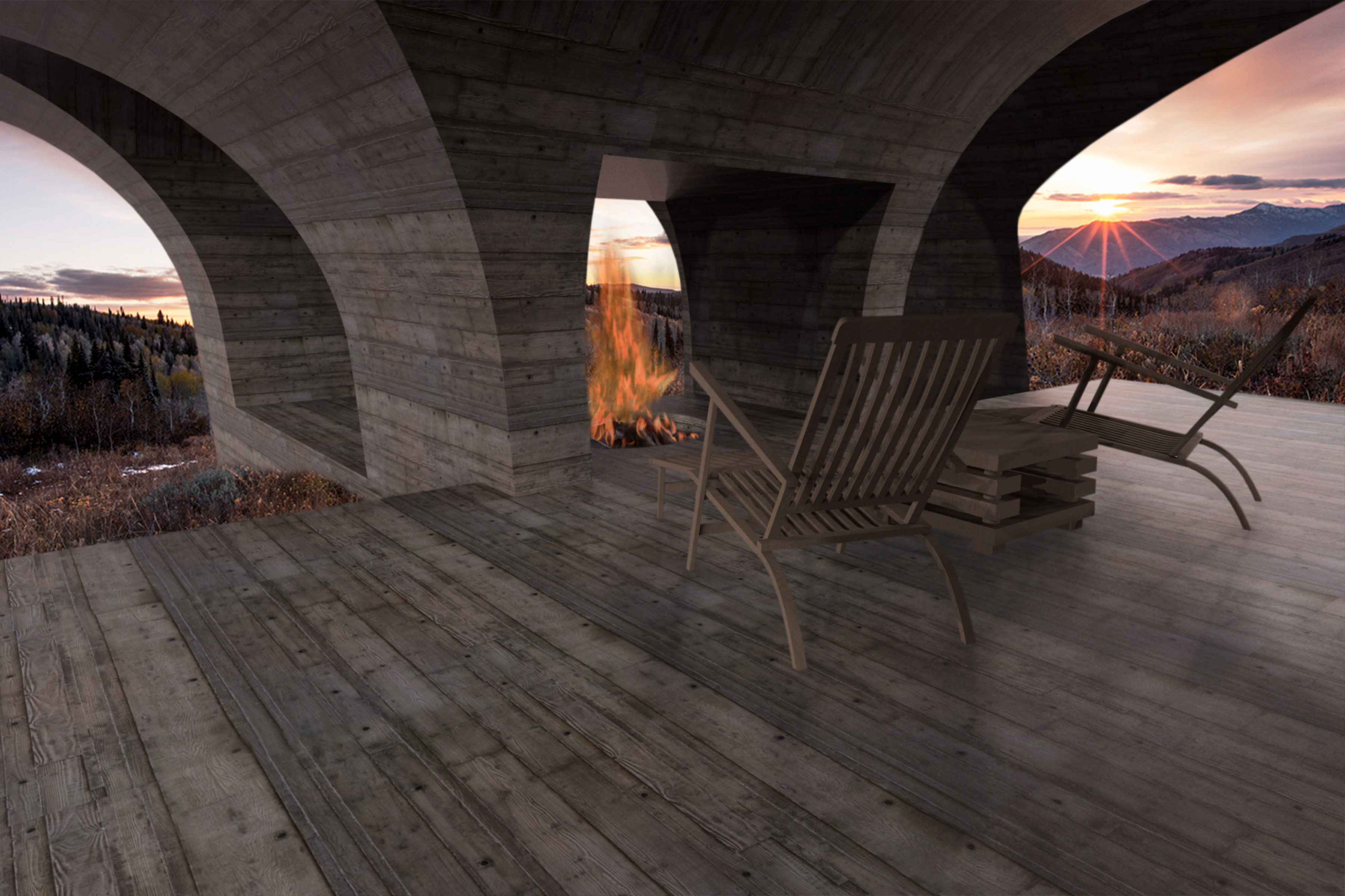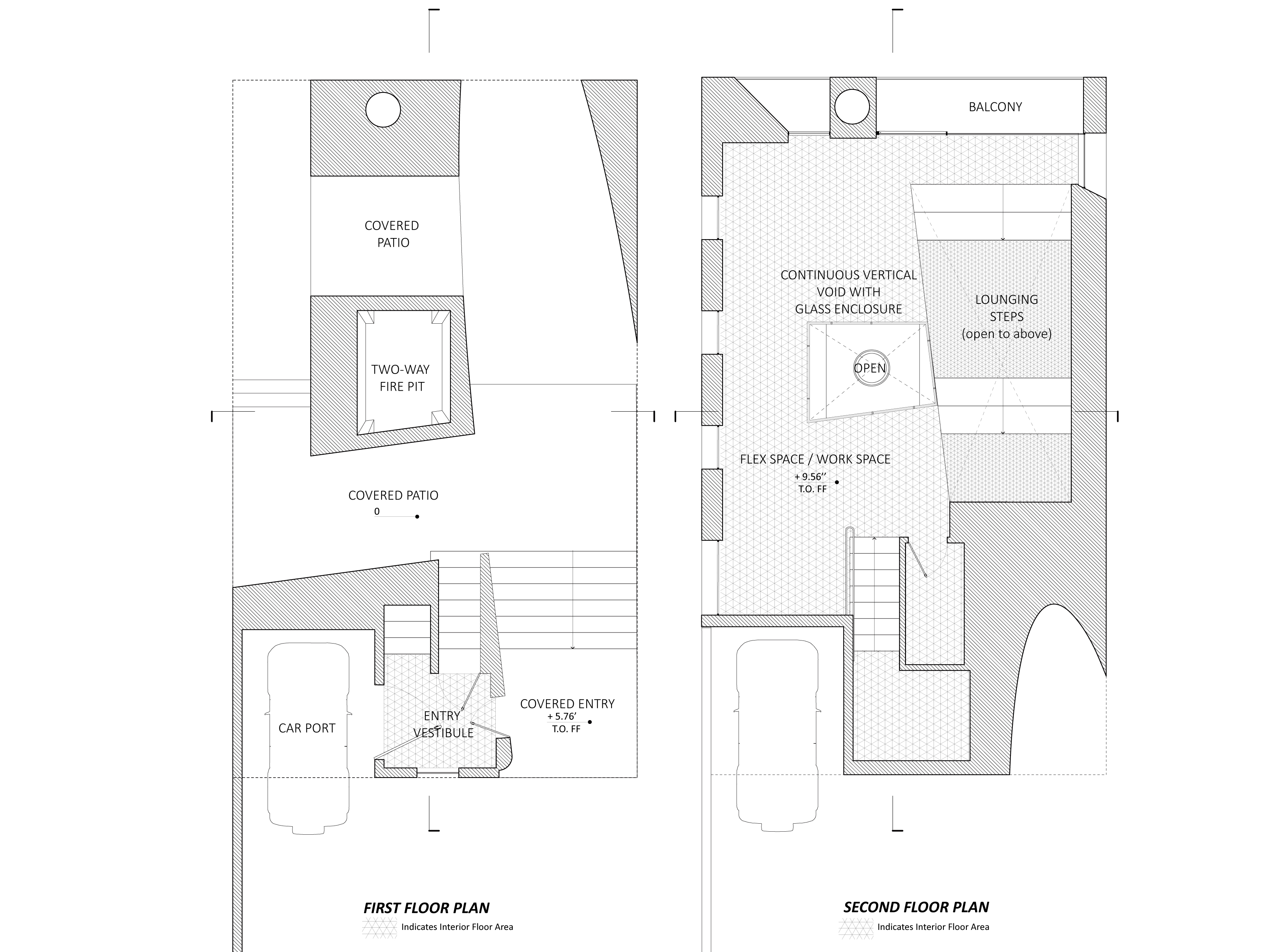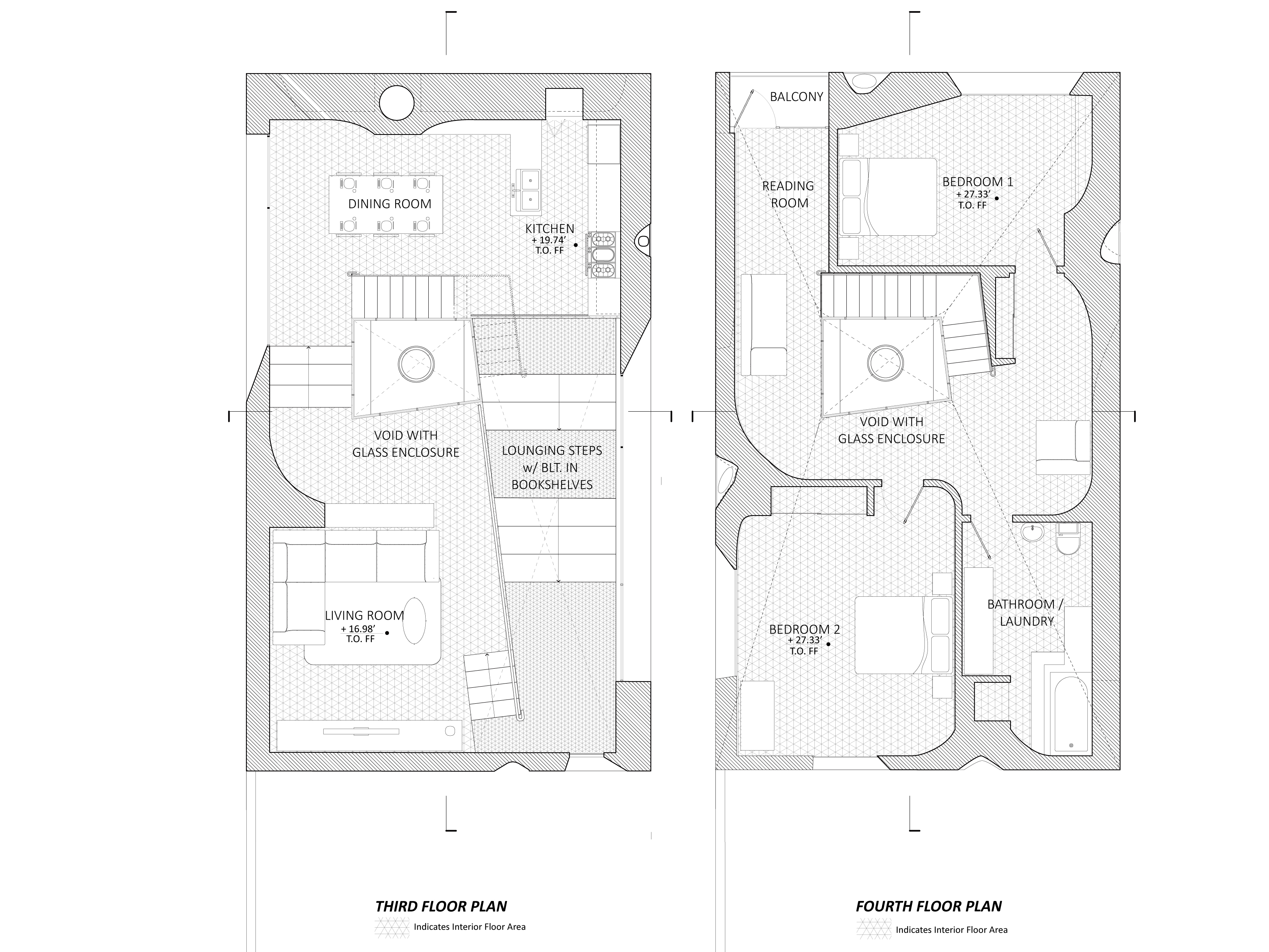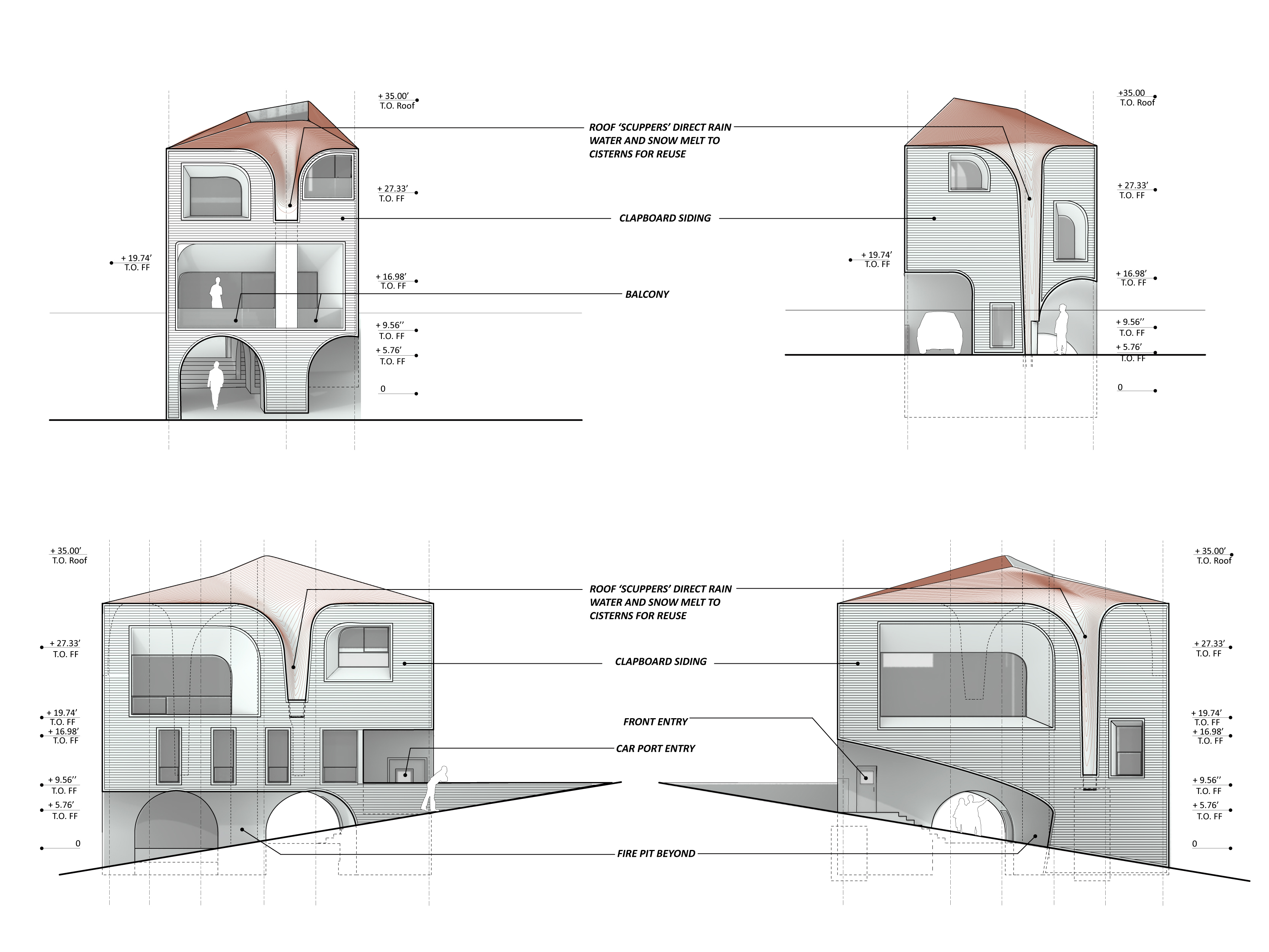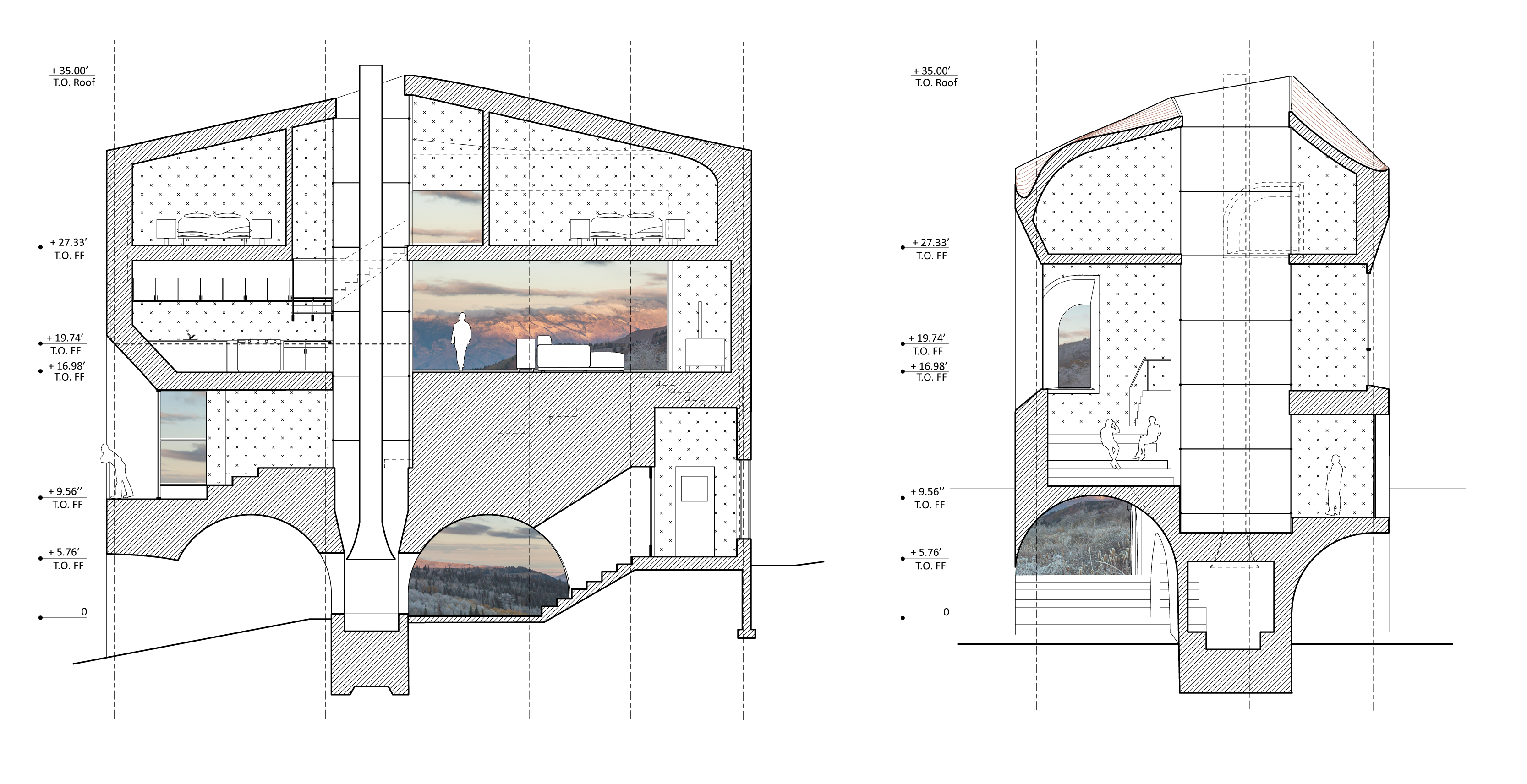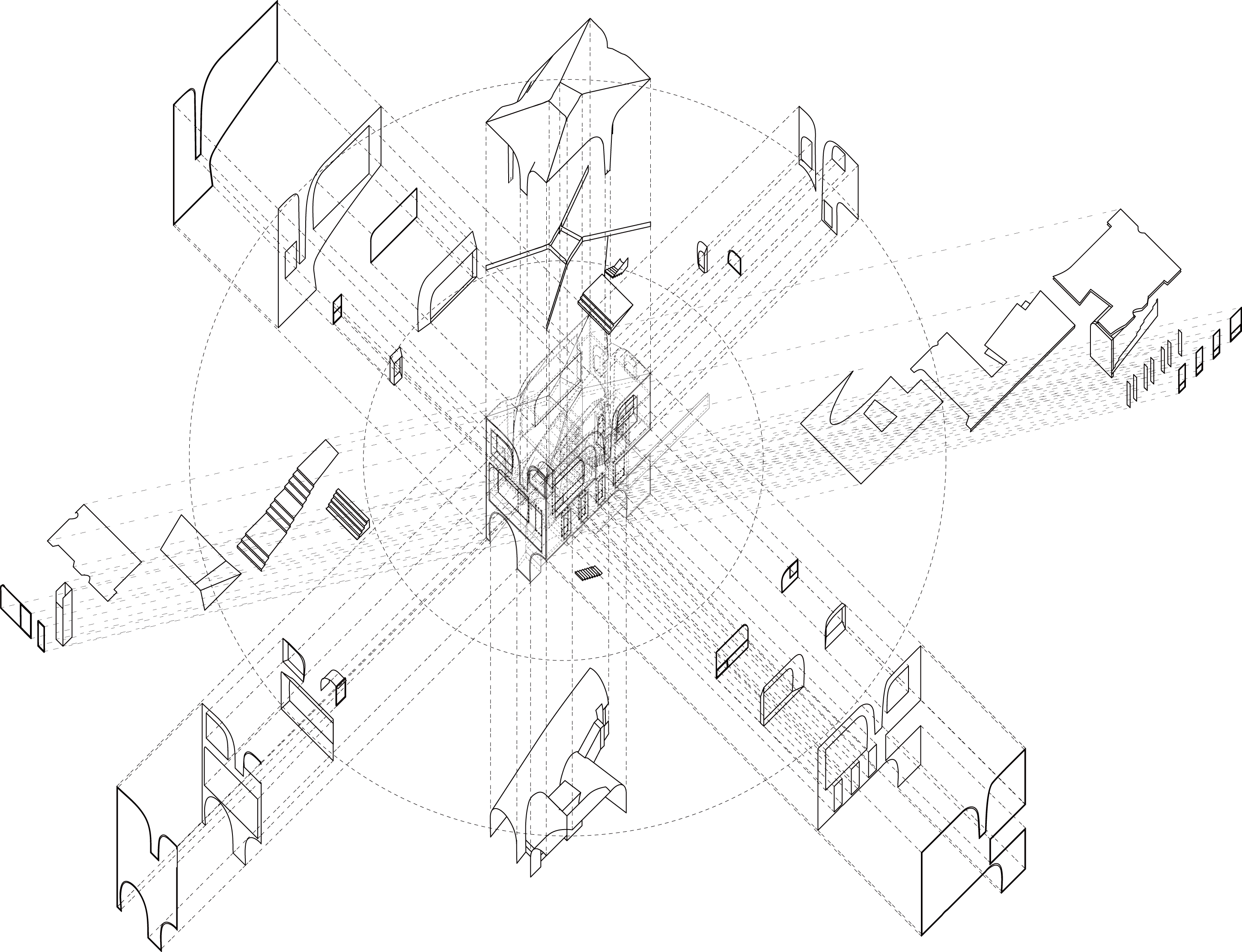Perhaps the main feature of this house is the vaulted bottom where house and mountain meet. These vaults are meant to open the house to the landscape, thus allowing the landscape to move through the house while creating a covered porch for year round enjoyment.
![]()
![]()
![]()
![Fire pit with covered outdoor area]()
![Ground and 2nd Floor Plan]()
![3rd and 4th Floor Plan]()
![Elevations]()
![Sections]()
![Double Exploded Axon Diagram]()
Underscoring the Mountain House is a fundamental architectural conundrum lingering around the relationships of architectural form and context; should architecture blend in, or should it stand out? Blending in is often cited as somehow morally or environmentally beneficial, yet simply blending in has also been said to lack the power to change social habits and elevate cultural forms of attention in the way that architecture that stands out does.
In this case, the mountain—wild and geologic—juxtaposed by the house—comforting and cultural—offers a contrast between a carved cube and complex topography. The cube resists frontality, making the house an omni-oriented object while the topography initiates a kind of sidedness to the house as a virtue of its slope. The formal articulations of the base cube are best characterized by the manipulation of three parts; the barrel vault, the roof scupper, and the bay window. Intersecting barrel vaults simultaneously cleave (voids) and suture (structural mass) the house to the ground while also minimizing the cabin’s physical footprint in the landscape. The barrel vaults create a covered underbelly, or porch, with a central fire place, giving the effect that landscape elements move between and through the house. Four exaggerated scuppers, one on each side of the house, peel down the facades, directing water to concealed cisterns and inverted bay windows with copper cladding appear to recieve pressure from the surrounding landscape, turning inward.
Copyright, Endemic Architecture 2024


